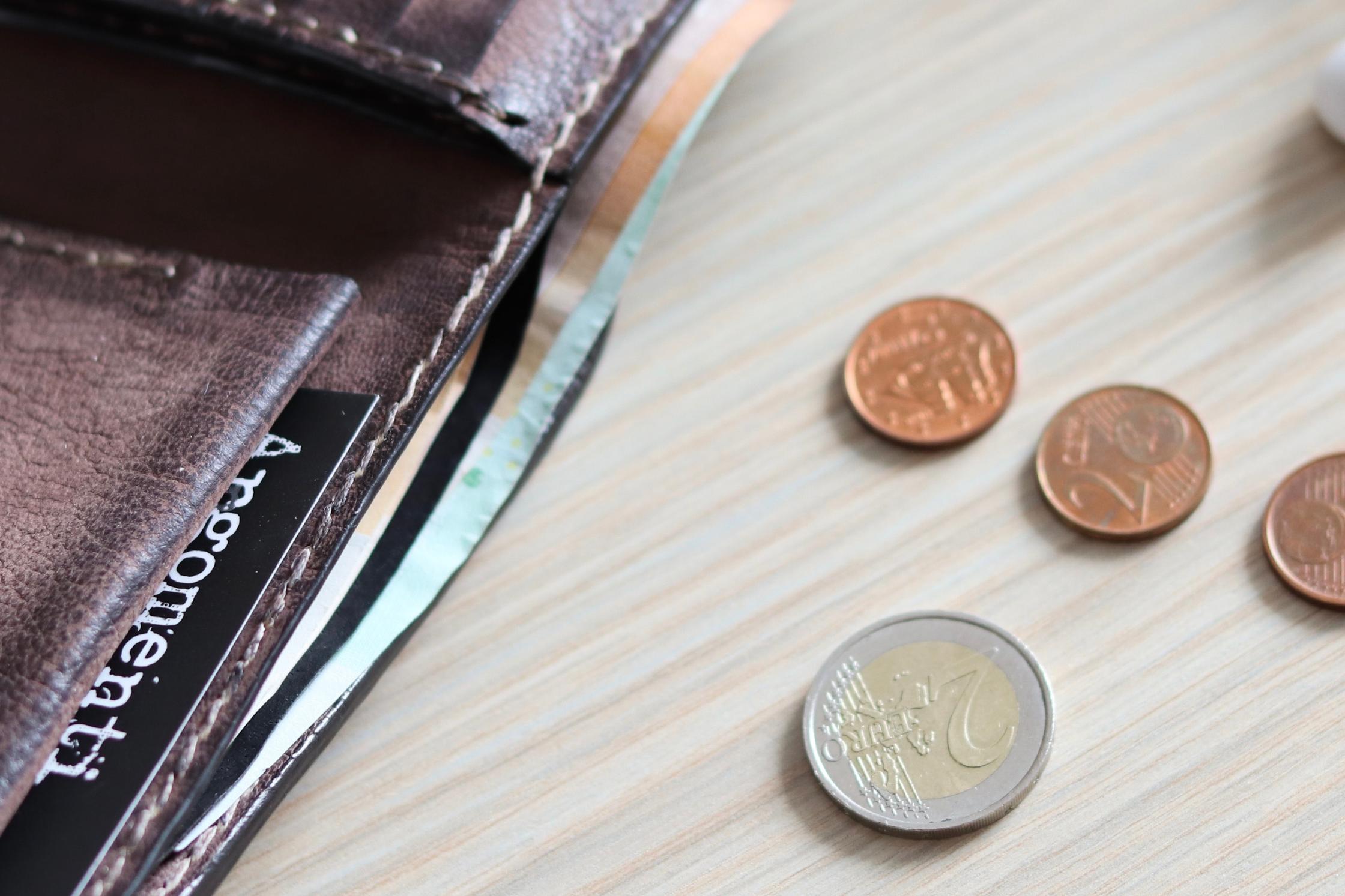This is the fourth blog of the MicroMemberships project. Read blog 1, blog 2 and blog 3.
Creative makers who want to earn income from their fans via digital channels are often forced to make use of the perverse revenue models of Big Tech platforms. This is at the expense of the quality and diversity of online content (see blog 3). Platforms increase existing competition between creators for attention and make them dependent on advertising revenue to indirectly receive financial support from their audience. Commodification prevails online: relationships are drawn into the market and expressed in terms of money. Big Tech platforms like Instagram force content creators towards revenue models in which transactions dominate the relationship with their audience.
In the previous blog in this series, we concluded that many digital revenue models for creative makers encourage the commercial nature of the Internet as it exists today. To build a better Internet, we need to consider the questions: how do we want creators and audiences to interact online? What does that mean for the relationship between creator and audience and the content they exchange? And what revenue models and technology can then support their choice?
Waag works on open, fair and inclusive technology; as such we use the Public Stack: a model that reveals the underlying assumptions and values of technology. The goal is to develop technology that respects human rights and has an eye for public values. The starting point is not the shareholders (private stack), but people who make their own choices about how they use technology and - together - shape society.
In search of cooperation and solidarity
Which values do we want to see more in the foreground of (online) revenue models? Instead of individualisation and competition, we are looking for solidarity and cooperation in communities. The current revenue models on the internet stand in the way of community. Artist Yin Aiwen evocatively describes how platforms have contributed to the development of an Internet that revolved around 'subject-oriented communities' into an Internet of 'persona-driven' platforms. In response to this individualisation, we crave communality.
We are convinced that creative makers, still in a precarious social position and often self-employed, benefit especially from cooperation and solidarity: both with their public and with other makers. This was confirmed in conversations we had with artists about digital tools they use for income and interaction with audiences. The Big Tech platforms cost them a lot of time, require a specific form of content and give little opportunity to receive direct financial support from audiences. Our exploration also revealed that this group could benefit from some additional income from their audience to complement ever-shrinking funding options.
Our desire to further explore solidarity and collaboration between creators and their audiences stems from our earlier exploration of web monetisation: MicroDonor. We experimented with the Coil standard to enable internet users to make microdonations to journalists, open source developers and artists. One of the conclusions was that individual creators can benefit from joining forces to serve a larger audience with their work or content. Another outcome of that exploration was the need for a more stable income stream, which one-off donations cannot guarantee.
MicroMemberships: web monetisation for collectives
How can a revenue model support solidarity and collectivity instead of undermining it, as platforming does? We are looking for a solution by means of a thought experiment: MicroMemberships. We visualised this conceptual model in mock-ups.

Mock-ups of MicroMemberships application. These can be different interfaces of a wallet to manage your MicroMemberships.
MicroMemberships are small subscriptions to collectives of creative makers, possibly linked to their (online) work that can be seen, listened to or read. ‘Micro' because it concerns small amounts per month. ‘Membership' because, unlike donations, a membership is based on a community of members. Members do more than just transfer money in exchange for entertainment; they are members of a group and - more or less - actively contribute to it. The concept invites two-way traffic between creators and audience.
There are similar concepts that have found their way onto the internet in new forms of journalism. Editors such as those at De Correspondent have used membership models to create a new relationship between journalists and the public. Well-curated discussion sections changed the work of journalists; writers interacted with their audience and involved them as experts where relevant. The Correspondent worked with Professor Jay Rosen on a project to map out membership models for editorial boards: The Membership Puzzle Project.
Resisting the platform trap
But the exploration of open and fair online revenue models for creators leads us time and again to centralised, monolithic platforms and profit maximisation for the middlemen. After discussions with various artists about MicroMemberships, it turns out that with our concept we ourselves also fall into the trap of a uniform platform solution. The interface (shown above) puts profiles of very different collectives next to each other in a uniform way, presses them into the same mould and puts them in competition with each other. This concept is a one-size-fits all solution, while every collective and community needs something different.
Our initial elaboration of MicroMemberships leaves little room for the messy reality of maker collectives. These are often loose communities in which people are involved to varying degrees. How can we support this technically? In our mock-up, the makers can set the minimum amount and period for which people can become members. On the pages of the collectives in our interface, you could show who is part of the collective and how the money is distributed, transparently and accessibly. But the question is how this works for a changing collective of makers.
The appeal of the blockchain
In the search for commonality and decentralised organisation of collectives, some creative makers are turning to blockchain applications such as distributed autonomous organisations (DAOs) and non fungible tokens (NFTs). It is no surprise that visual artists, designers and musicians are attracted to NFTs and DAOs. They offer the promise of decentralised networks, made up of people from all over the world. A look at the applications of DAOs and NFTs reveals that in the world of Web3, there is a promise of an intimate relationship between (digital) revenue models and the involvement of a community in the production of work, whether collaborative or not. For example, artist and composer Holly Herndon recently launched a DAO project called Holly+. The artist trained a machine learning algorithm on her own voice and allows an audio sample to be converted into a clone of her voice on holly.plus. Members of a DAO decide on who can use holly.plus and on the development of new tools for holly.plus. The income from commercial use of holly.plus is managed and distributed by the members of the DAO. The project raises issues of authorship, intellectual property and revenue sharing.
We conclude that distributed autonomous organisations are interesting concept in which communities receive and distribute resources. But we see many snags in applications of a blockchain (see blog 2). Despite the promise of decentralisation, we mainly see a lot of centralised services and the applications are very clouded by speculation. NFTs revolve around individual tradable property; also, the 'membership' tokens that give voting rights in DAOs can often be bought. Isn't this emphasis on individual ownership of tokens (fungible or non-fungible) at odds with common resource management? Not to mention the ecological footprint. Where we want to keep a revenue model open and fair, there is no real place for DAO or NFT in terms of implementation in the current blockchain ecosystems despite its pursuit of decentralization.
Need for diversity of possibilities and relationships
There are so many artists with so many practices, yet there is a limited palette of online revenue models. For practices and collectives with diverse forms of work, there is no 'one size fits all'. We need to break out of the rigid platform restrictions.
After our exploration, we argue that there is a need for a kind of Memberships Guide for MicroMemberships; this guide aims to assemble technical elements into a MicroMembership model that fits well with the practice of makers, with specific attention to the ethical considerations in the tech stack. Not only do we want to open the black box of web monetisation, we also want the tech stack to comply with the principles of the Public Stack, such as safeguarding our rights and public values.
Building blocks for Public Stack MicroMemberships
What does it take to make long-term donations to collectives of creators? That comes down to a number of technical building blocks and the social relationships they need to support. If we open the bonnet of online revenue models, we see a combination of, for example, a customer management system to maintain lists of members, transaction handling between different account holders or accounts in different currencies, a registration module to register membership and communication channels such as chat or email to maintain contact with the audience/members. Perhaps maker collectives also need software to support them in making decisions as a collective or the distribution of resources. Think of solutions such as Cygnet, developed by Black Swan Trust, which uses quadratic voting to determine which project proposals will receive joint funding.
For all these building blocks of MicroMemberships, creators have to make choices about how they want to interact with each other and their audiences. The elements mentioned above make many different MicroMembership constructions possible: from a Patreon-like website to a crowdfund button in your browser to a chat group with a joint bank account. The choices are about the type of relationship you want to put in the foreground. The ready-made packages offered by Patreon, for example, deprive creators of choices about the type of relationship they want to have with their audience. Once creators have determined what kind of relationships they want to foreground, the task of making ethical decisions about the technical building blocks to support the relationship follows.
If the solution is to comply with the principles of the Public Stack, it is important to select technical building blocks that make use of open standards and open-source development and that have an eye for public values such as transparency, privacy and user autonomy.
Guides to the technical construction of membership structures have been published before, particularly for news editors. See for example The Public Media Stack: a guide to help news editors make ethical decisions about the software they use for their practice with a chapter on 'engagement & monetisation', initiated by Matt Locke. Or see The Membership Guide with a section on the Tech Stack, initiated by Professor Jay Rosen and De Correspondent. These are fine initiatives, but the technical building blocks proposed in them leave much to be desired in order to comply with the principles of the Public Stack. For example, these guides mention as a plus that in Patreon, the pricing model is clear. But that pricing model means the middleman skims five to 12 per cent of transactions, even as the platform is used by more than 200,000 crowdfunding creators. We also want to get rid of the problematic tracking by services like Google Analytics, which is mentioned in the Membership Guide as an option for gaining insights about users.
An overview of technical building blocks that are more compliant with principles of the Public Stack can be found in the Public Spaces kitchen. But there is a need for a comprehensive guide, with good options for putting together a MicroMemberships stack.
We are still missing parts for the Public Stack Micromemberships guide. One question is about the protocol for transaction processing. Which protocol allows creators and the public to do small periodic transactions among themselves (peer-to-peer), without skimming off a percentage by an intermediary party? And one that is also available to an informal collective of makers, without a business account and without hiring an intermediary such as Adyen? The Interledger Foundation is working on Rafiki, a standard for exchanging currency between wallets all over the world. The infrastructure consists of nodes that do the conversion of the currencies. The nodes do not belong to the developers of the currencies; any party can become a node. It is an interesting attempt to enable decentralised transactions between organisations and individuals. Unfortunately, we see that the transaction handlers are all crypto-based platforms (such as Ripple). So this solution does not yet meet our needs.
Another question is the informality of collectives versus the formality of transactions. A possible answer can be found in Open Collective. Open Collective offers a toolbox for informal grassroots communities and open-source development communities to raise funding, meet legal requirements for receiving grants or manage money. Collectives can receive donations or grants through fiscal hosts and distribute them within the collective without having to be a formal organisation themselves. The host manages the donations that come in, and takes care of accounting and tax matters. If the hosts charge a fee from the collectives they support, then Open Collective receives part of that money. Open Collective shows how formal organisations can play a role in supporting informal communities that they work with or care about.
The preceding paragraphs are some initial thoughts on a MicroMemberships guide as the guide is not yet complete. The guide will never be an answer to all the needs of creative content makers who want to break away from Big Tech: a tech stack for MicroMemberships does not offer an answer to discovery and visibility online. It also remains a challenge to connect all the necessary technical building blocks without too much technical knowledge.
Conclusion
We began with a search for open and honest online revenue models. Away from Big Tech, away from platformisation, focused on collaboration. The search led us to the concept of MicroMemberships: long-term crowdfunding of small amounts to a loose collective of makers. The diversity of making practices and communities made us realise that there is no one-size-fits-all solution. A guide to possible tech stack elements would offer a solution.
We have become accustomed to being offered ready-made partial solutions or a fully functioning product. This has advantages (ease of use), but also disadvantages. It is not transparent how the technology exactly works, who benefits from it and whose data is up for grabs. It also forces creators of online content all into a uniform mould and into competition with each other. These are not the relationships we would like to see supported by technology.
We have named technical building blocks to shape MicroMemberships. The next step is to find software modules that comply with the principles of the Public Stack: open, fair and inclusive. Then, the most important thing remains: to design a MicroMembership model that matches the wishes of a collective and the relationships that they want to establish with each other and their audience. We propose to move away from uniformity and bend technology back to our will. With diversity and room for messiness, we genuinely offer resistance against platformisation.


